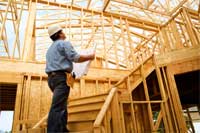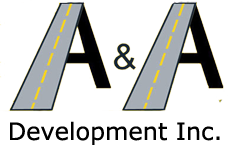Framing Contractor Tampa
Post and Beam Framing – Balloon framing – Platform framing
 Framing, in construction known as light-frame construction, is a building technique based around structural members, usually called studs, which provide a stable frame to which interior and exterior wall coverings are attached, and covered by a roof comprising horizontal ceiling joists and sloping rafters (together forming a truss structure) or manufactured pre-fabricated roof trusses—all of which are covered by various sheathing materials to give weather resistance. We are a professional licensed Framing Contractor Tampa
Framing, in construction known as light-frame construction, is a building technique based around structural members, usually called studs, which provide a stable frame to which interior and exterior wall coverings are attached, and covered by a roof comprising horizontal ceiling joists and sloping rafters (together forming a truss structure) or manufactured pre-fabricated roof trusses—all of which are covered by various sheathing materials to give weather resistance. We are a professional licensed Framing Contractor Tampa
Modern light-frame structures usually gain strength from rigid panels (plywood and other plywood-like composites such as oriented strand board (OSB) used to form all or part of wall sections, but until recently carpenters employed various forms of diagonal bracing (called wind braces) to stabilize walls. Diagonal bracing remains a vital interior part of many roof systems, and in-wall wind braces are required by building codes in many municipalities or by individual state laws in the United States.
Light frame construction using standardized dimensional lumber has become the dominant construction method in North America and Australia because of its economy. Use of minimal structural materials allows builders to enclose a large area with minimal cost, while achieving a wide variety of architectural styles. The ubiquitous platform framing and the older balloon framing are the two different light frame construction systems used in North America.
Framing The Walls
Wall framing in house construction includes the vertical and horizontal members of exterior walls and interior partitions, both of bearing walls and non-bearing walls. These stick members, referred to as studs, wall plates and lintels (headers), serve as a nailing base for all covering material and support the upper floor platforms, which provide the lateral strength along a wall. The platforms may be the boxed structure of a ceiling and roof, or the ceiling and floor joists of the story above.[1] The technique is variously referred to colloquially in the building trades as stick and frame, stick and platform, or stick and box as the sticks (studs) give the structure its vertical support, and the box shaped floor sections with joists contained within length-long post and lintels (more commonly called headers), supports the weight of whatever is above, including the next wall up and the roof above the top story. The platform, also provides the lateral support against wind and holds the stick walls true and square. Any lower platform supports the weight of the platforms and walls above the level of its component headers and joists.
Framing lumber should be grade-stamped, and have a moisture content not exceeding 19%.
There are three historically common methods of framing a house.
- Post and Beam, which is now used predominately in barn construction.
- Balloon framing using a technique suspending floors from the walls was common until the late 1940s, but since that time, platform framing has become the predominant form of house construction.
- Platform framing often forms wall sections horizontally on the sub-floor prior to erection, easing positioning of studs and increasing accuracy while cutting the necessary manpower. The top and bottom plates are end-nailed to each stud with two nails at least 3.25 in (83 mm) in length (16d or 16 penny nails). Studs are at least doubled (creating posts) at openings, the jack stud being cut to receive the lintels(headers) that are placed and end-nailed through the outer studs.
Wall sheathing, usually a plywood or other laminate, is usually applied to the framing prior to erection, thus eliminating the need to scaffold, and again increasing speed and cutting manpower needs and expenses. Some types of exterior sheathing, such as asphalt-impregnated fibreboard, plywood, oriented strand board and waferboard, will provide adequate bracing to resist lateral loads and keep the wall square, but construction codes in most jurisdictions will require a stiff plywood sheathing. Others, such as rigid glass-fibre, asphalt-coated fibreboard, polystyrene or polyurethane board, will not.[1] In this latter case, the wall should be reinforced with a diagonal wood or metal bracing inset into the studs.[4] In jurisdictions subject to strong wind storms (hurricane countries, tornado alleys) local codes or state law will generally require both the diagonal wind braces and the stiff exterior sheathing regardless of the type and kind of outer weather resistant coverings.
